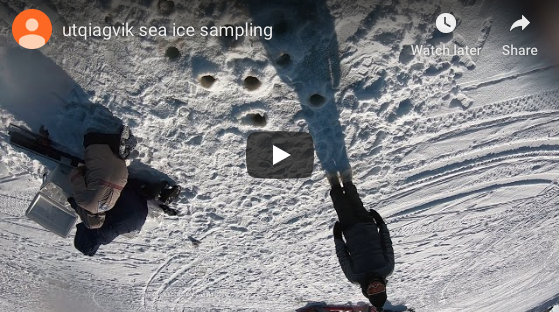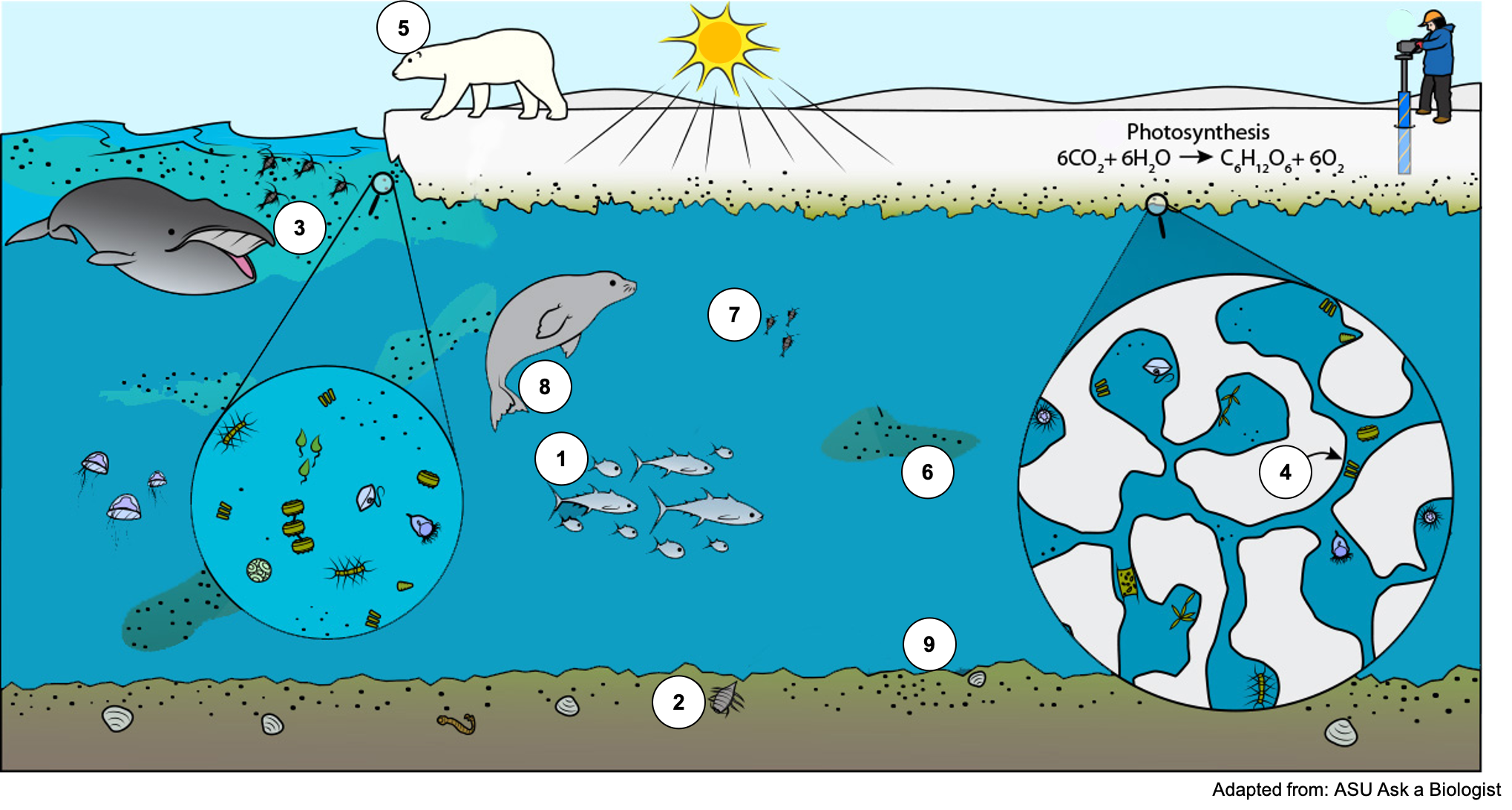Educators: Register now for MOSAiC expedition virtual teacher workshops!
Bring the unprecedented science and adventure of the 2019-2020 MOSAiC expedition into your classroom with new middle and high school curricula developed by the education and outreach team at the University of Colorado Boulder. We are offering two different teacher workshops in June 2020, which will be facilitated virtually by MOSAiC scientists and the curriculum developers. Participants will engage with immersive 360° virtual expeditions, authentic real-time Arctic datasets, and App-based labs in these two-day online teacher workshops.
Learn more about and register for the MOSAiC virtual workshops for teachers
Join MOSAiC at the European Geophysical Union's Sharing Science Online: May 4-8
You're invited to join MOSAiC team members on May 5th, 14:00 - 15:30 GMT for the APECS-ARICE Webinar "From icebreakers into classrooms - opportunities for educators and scientists," part of the 2020 EGU's Sharing Science Online series. The webinar will feature speakers that participated in the first part of the MOSAiC expedition on the support icebreaker Akademik Fedorov.
Register for the MOSAiC APECS-ARICE Webinar on May 5th
Arctic Ecosystems: Below the Ice
Life in Extreme Places
Less than fifty years ago, scientists assumed the dark depths of the ocean were essentially lifeless. How could primary producers, the base of every food chain in every ecosystem around the globe, photosynthesize and supply energy to other organisms (consumers) without sunlight? But in 1977, scientists on board a research submersible 8,000 feet below the ocean's surface discovered an ecosystem of organisms unknown to science living near hydrothermal vents, which are like geysers on the ocean floor. The primary producers in this ecosystem – bacteria – were harnessing energy stored in the bonds of chemicals that were being spewed out of the vents. This discovery helped us realize that life has adapted to some pretty weird and inhospitable places on Earth (the Arctic included!), but it also reminded us that there are a lot of things on Earth we wouldn't know about if it weren't for curious explorers and expeditions.
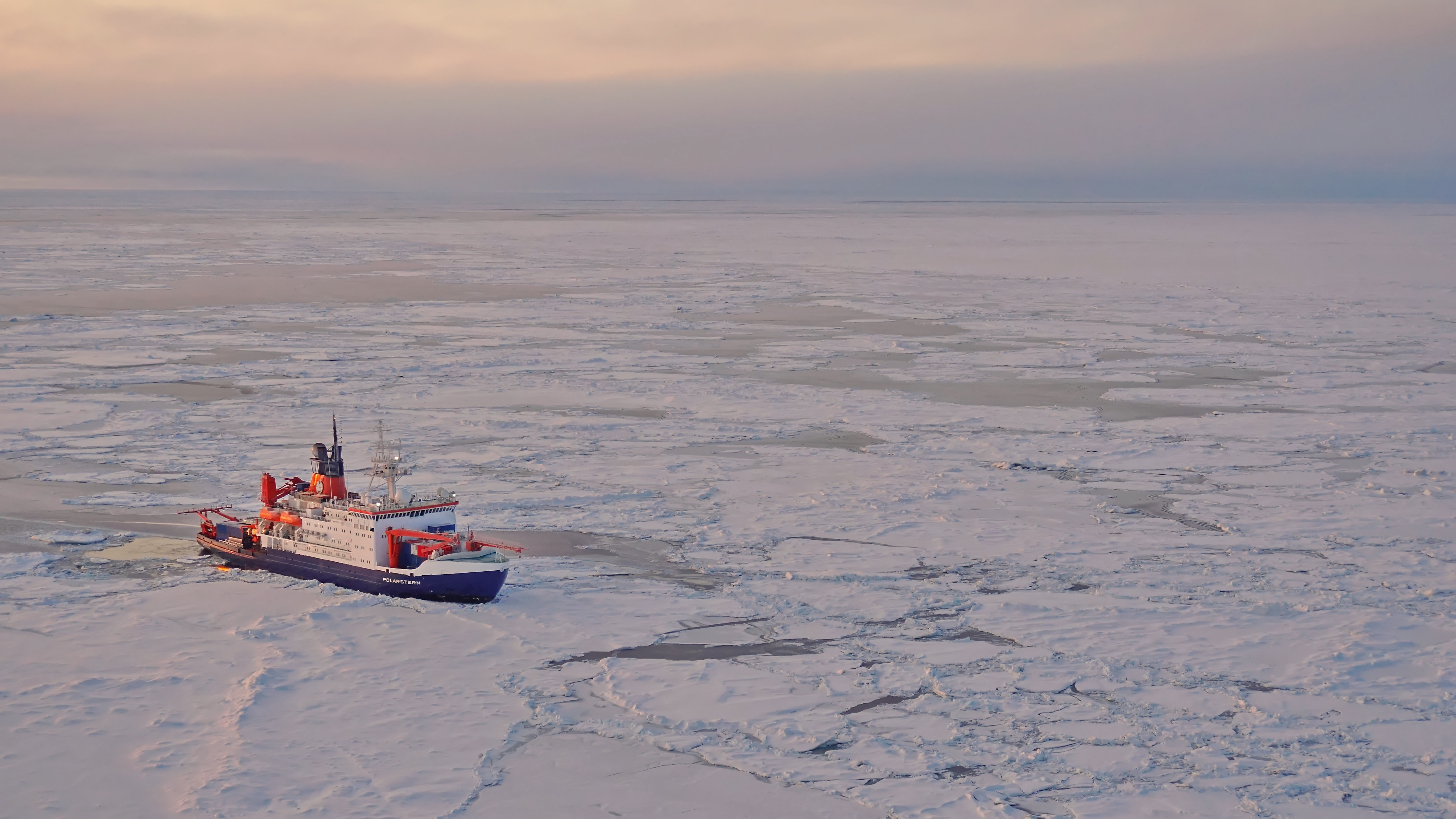
Is the Central Arctic as barren as it looks?
Looking at photos of the Central Arctic, you might notice how barren it is. As far as the eye can see, there is white - sea ice floating on top of an ocean thousands of meters deep. No green, no obvious evidence of plant life. But MOSAiC team members have seen signs of animal life - polar bears, Arctic foxes, and seals have all been spotted around the Polarstern and MOSAiC ice camp. How do they survive? What is the foundation of the food web that these animals are a part of? It turns out the answer lies beneath...under the ice! Photo credit: Markus Rex
Meet the MOSAiC Ecosystems Team Members
Life Beneath the Ice
If you've been following the MOSAiC expedition and MOSAiC Monday, you've seen a lot of pictures of sea ice from above. But what does it look like from below? Follow a camera through sea ice into the ocean below in this video captured by MOSAiC scientist Jeff Bowman during MOSAiC training in Utqiagvik, Alaska in April 2019. What do you see? You might notice the bottom of the sea ice is covered in a layer of something greenish-brown. Emelia Chamberlain, MOSAiC team member and graduate student scientist who works with Jeff at Scripps Institution of Oceanography gives us some insight into what this is:
"[In the Central Arctic] we will be absolutely surrounded by marine microbes. Microbes are microscopic organisms (algae/phytoplankton, bacteria, archaea, fungi, etc.) that make up the 'unseen' majority of diversity in the Arctic. These tiny, generally single-celled, organisms play a huge role in the Arctic food web by recycling nutrients like carbon and nitrogen, and providing energy for upper trophic levels. On MOSAiC, we expect to find active microbial communities in both the water column of the Arctic Ocean and within the sea ice matrix itself."
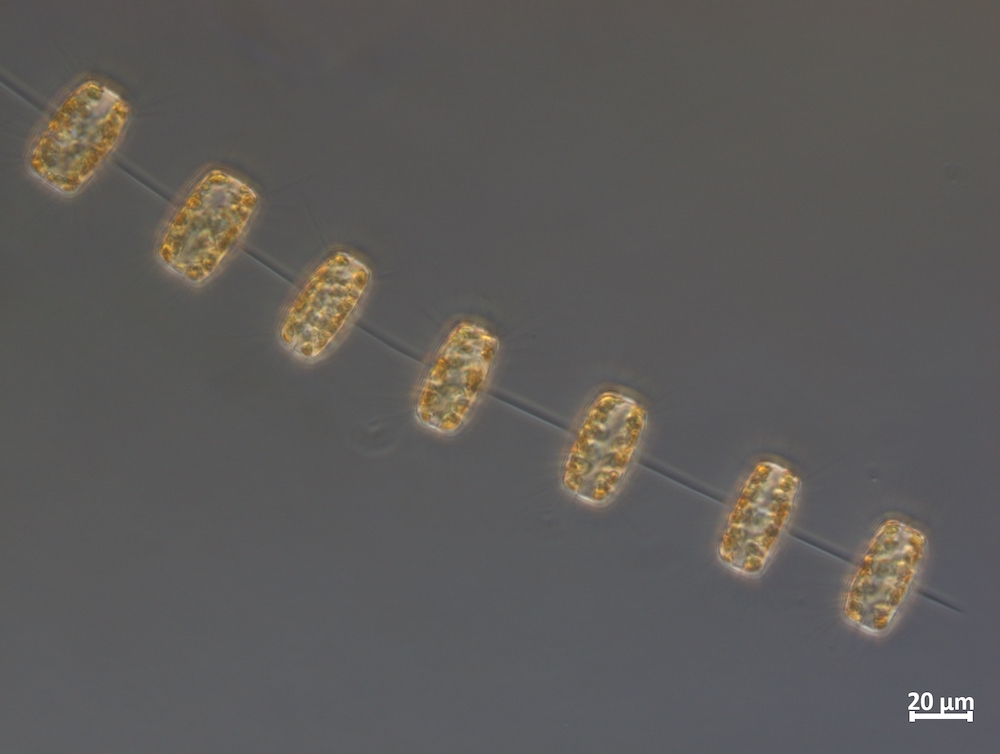
Ice Algae
The brownish-green layer on the bottom of the sea ice you saw in the video above is called 'ice algae' - photosynthetic primary producers that are part of the foundation of the Central Arctic food web. Ice algae have been found not only to live underneath the sea ice, but inside it too in brine channels, or pockets of very salty water. Like the organisms scientists found living around hydrothermal vents in 1977, these ice algae have become adapted to living in extreme conditions - months without sunlight, extreme cold, and high salinity inside the brine channels. Many appear to go dormant in the winter during polar night and flourish when the sun returns in the spring. Researchers at the Alfred Wegener Institute, including MOSAiC scientists Ilka Peeken and Hauke Flores, have been studying Arctic food webs and the role ice algae play in them. Not only do ice algae support organisms (for example, copepods, amphipods, and crustaceans) that live directly under the ice in the Arctic Ocean, but also those that live much deeper down in the water!
Photo (R): MOSAiC team member Clara Hoppe took this photo of Arctic algae underneath a microscope
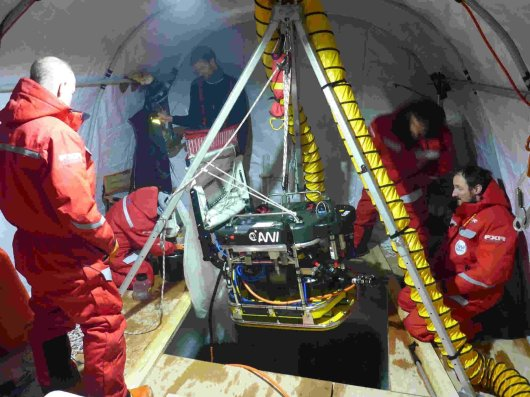
Exploring Under the Sea
How exactly do MOSAiC scientists study what lives beneath the sea ice around the Polarstern? In this photo, you see MOSAiC researchers lowering a remotely operated vehicle (ROV) down through a hole in the ice. In addition to being equipped with a camera so that scientists can peer into the frigid ocean, the ROV can also tow a net to capture plankton in the water. Scientists have sampled plankton near the surface just under the ice, as well as thousands of meters deep! Fish biologists on MOSAiC also use long lines to try to catch things like polar cod in the water. Photo credit: Eric Brossier, courtesy Wageningen University & Research
Read more about ice algae and ecosystems under the sea ice:
What Goes on Beneath the Floes
Ice Algae: The Engine of Life in the Central Arctic Ocean
Learn more about life beneath the ice in this video featuring MOSAiC scientist Carin Ashjian:
 Fill in the Food Web
Fill in the Food Web
Take a look at the figure below which shows various organisms that you might find in an Arctic marine food web. You can click on the figure for a larger printable version. Can you draw arrows between organisms showing who eats who in this food web? Below are descriptions of the numbered organisms (hint: the numbers are random and do not indicate an order in the food web):
1. Fish that might live in the Arctic Ocean, such as polar cod
2. Small animals that live on the seafloor, such as isopods, or small marine invertebrates
3. Bowhead (baleen) whale
4. Ice algae
5. Polar bear
6. Algae in the water
7. Copepods, or small crustaceans (animals) in the water
8. Seal
9. Heavier algae that sink to the seafloor
Challenge Questions:
- What do you think would happen to ice algae if the Arctic was one day ice-free as a result of climate change? What about polar bears?
- What do you think would happen to the Arctic marine food web shown in the figure above if the ice algae population decreased or went away completely?
- What do you think would happen to the Arctic marine food web shown in the figure above if the polar bear population were to decrease or disappear? What about if killer whales were introduced to this food web?
Find out who eats who in the Arctic marine food web shown in the figure above!
 #askmosaic: Orcas in the Arctic?
#askmosaic: Orcas in the Arctic?
This question was submitted by Makayla from Seneca Falls Middle School: Are there killer whales in the Arctic Circle? If so, have you seen any?
"I was on the Akademic Fedorov when it returned to Norway in late October after helping deploy MOSAiC. There was one sunny afternoon in very calm open water in the Barents Sea just north of western Russia when everyone was out on the deck. It was the first time we had seen the sun in several weeks and it was a beautiful day. There were killer whales swimming alongside the ship then. I didn't actually see them because I was on the wrong side of the ship, but I did see some video. We have not seen any on Leg 3 and I wouldn't expect to."
-Chris Cox, NOAA, MOSAiC Team Atmosphere
"My knowledge on the killer whales is limited. During fisheries surveys in the Northeast Atlantic in late May, we see killer whales in Northern Norway and the southern part of the Barents Sea, and they are already known to be commonly observed in that region (there are tourist trips for this). These whales target big herring schools in the shelf area."
-Serdar Sakinan, Wageningen Marine Research, MOSAiC Team Biogeochemistry & Ecosystems
Did You Know?
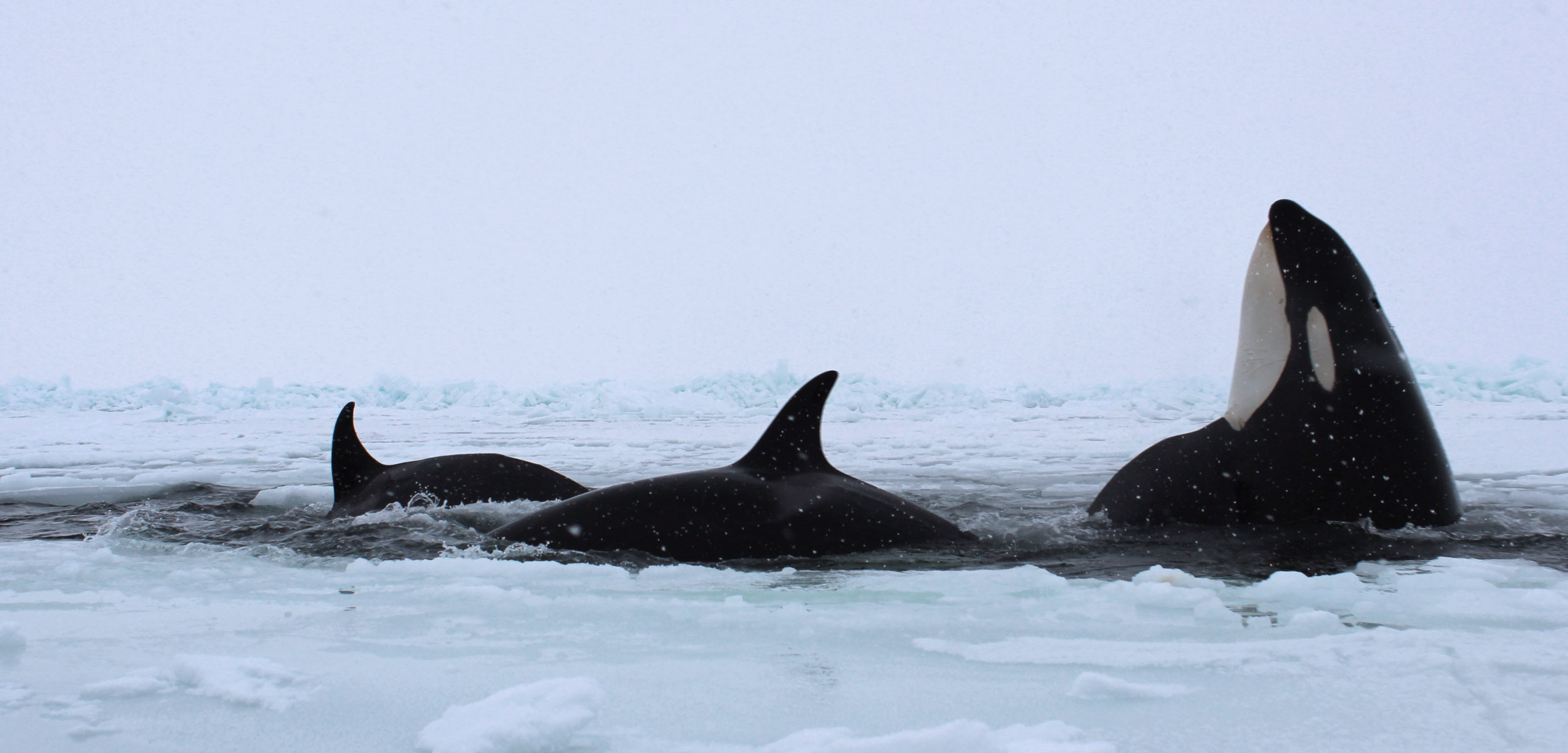
Lower-than-average sea ice in the Arctic in recent years has led to an increase in orca sightings by Inuit hunters in the Canadian Arctic. Orcas (aka killer whales) are not typically found in parts of the Arctic with significant ice cover as they have prominent dorsal fins and are not well adapted to these kinds of conditions. Scientists wonder if the geographic range of orca habitat in the Arctic will increase in the future as the Arctic sea ice extent continues to decrease. Many people wonder what the impact of an increase in orcas in the Arctic could have on Arctic marine ecosystems and food webs. Photo credit: Crystal Speedie
Send us your #askmosaic questions!
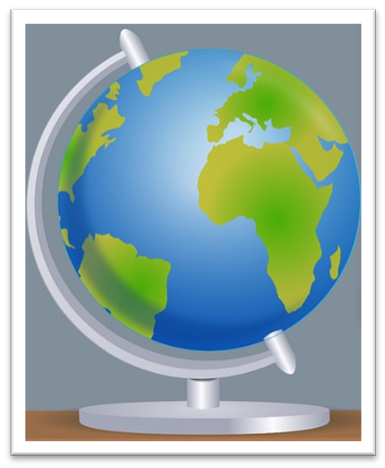 This week's featured remote learning resources
This week's featured remote learning resources
Reach the World + MOSAiC
Get more MOSAiC in your week with Reach the World's MOSAiC expedition page, where they feature articles and journal entries from MOSAiC expedition team members as well as photos and videos of their Arctic experiences. You can also watch past recorded video chats with MOSAiC team members, or watch live-streamed video chats hosted by our friends at Exploring by the Seat of Your Pants! Check out the most recent call and posts from Kaare Erickson, Arctic Science Liaison to learn more about indigenous communities in the Arctic and his work bring scientists and communities together. The next video chat will be on May 7th at 11 am MT/1 pm ET with MOSAiC logistics coordinator Sara Morris.
Learn more about and tune in to Sara's video chat on May 7th
Go to Reach the World's MOSAiC expedition page
Check out our full list of virtual and at-home polar learning resources here!
 MOSAiC Weekly Tracking
MOSAiC Weekly Tracking
Plot the Polarstern
Each week we will provide you with the latitude and longitude coordinates of the Polarstern so that you can track its journey across the Arctic.
Download the map to plot coordinates
Download a larger map of the Arctic for a bigger picture view of the expedition area
Location of the Polarstern
| Date | Latitude | Longitude |
| September 16, 2019 | 69.68 N | 18.99 E |
| September 23, 2019 | 72.31 N | 26.93 E |
| September 30, 2019 | 85.12 N | 138.05 E |
| October 4, 2019** | 85.08 N | 134.43 E |
| October 7, 2019 | 85.10 N | 133.82 E |
| October 14, 2019 | 84.85 N | 135.03 E |
| October 21, 2019 | 84.97 N | 132.73 E |
| October 28, 2019 | 85.47 N | 127.07 E |
| November 4, 2019 | 85.88 N | 121.70 E |
| November 11, 2019 | 85.82 N | 116.00 E |
| November 18, 2019 | 86.05 N | 122.43 E |
| November 25, 2019 | 85.85 N | 121.35 E |
| December 2, 2019 | 85.97 N | 112.95 E |
| December 9, 2019 | 86.25 N | 121.40 E |
| December 16, 2019 | 86.62 N | 118.12 E |
| December 23, 2019 | 86.63 N | 113.20 E |
| December 30, 2019 | 86.58 N | 117.13 E |
| January 6, 2020 | 87.10 N | 115.10 E |
| January 13, 2020 | 87.35 N | 106.63 E |
| January 20, 2020 | 87.42 N | 97.77 E |
| January 27, 2020 | 87.43 N | 95.82 E |
| February 3, 2020 | 87.42 N | 93.65 E |
| February 10, 2020 | 87.78 N | 91.52 E |
| February 17, 2020 | 88.07 N | 78.52 E |
| February 24, 2020 | 88.58 N | 52.87 E |
| March 2, 2020 | 88.17 N | 31.02 E |
| March 9, 2020 | 87.93 N | 24.20 E |
| March 16, 2020 | 86.87 N | 12.70 E |
| March 23, 2020 | 86.20 N | 15.78 E |
| March 30, 2020 | 85.37 N | 13.27 E |
| April 6, 2020 | 84.52 N | 14.38 E |
| April 13, 2020 | 84.28 N | 14.97 E |
| April 20, 2020 | 84.52 N | 14.57 E |
| April 27, 2020 | 83.93 N | 15.65 E |
| May 4, 2020 | 83.92 N | 18.03 E |
**Day when MOSAiC reached the ice floe that the Polarstern will become frozen in and drift with for the next year.
Log MOSAiC Data
Keep track of Arctic conditions over the course of the expedition:
Download Data Logbook for Sept. 2019 - Dec. 2019
Download Data Logbook for Dec. 2019 - Mar. 2020
Download Data Logbook for Mar. 2020 - June 2020
| Date | Length of day (hrs) | Air temperature (deg C) at location of Polarstern | Arctic Sea Ice Extent (million km2) |
| September 16, 2019 | 13.25 | High: 10 Low: 4.4 | 3.9 |
| September 23, 2019 | 12.35 | High: 6 Low: -1 | 4.1 |
| September 30, 2019 | 9.1 | -4.7 | 4.4 |
| October 4, 2019** | 6.27 | -13.0 | 4.5 |
| October 7, 2019 | 3.05 | -8.2 | 4.6 |
| October 14, 2019 | 0 | -14.7 | 4.8 |
| October 21, 2019 | 0 | -12.8 | 5.4 |
| October 28, 2019 | 0 | -18.3 | 6.8 |
| November 4, 2019 | 0 | -18.9 | 8.0 |
| November 11, 2019 | 0 | -25.5 | 8.7 |
| November 18, 2019 | 0 | -10.7 | 9.3 |
| November 25, 2019 | 0 | -18.4 | 10.0 |
| December 2, 2019 | 0 | -26.6 | 10.4 |
| December 9, 2019 | 0 | -23.1 | 11.2 |
| December 16, 2019 | 0 | -19.2 | 11.8 |
| December 23, 2019 | 0 | -26.9 | 12.2 |
| December 30, 2019 | 0 | -26.4 | 12.6 |
| January 6, 2020 | 0 | -28.0 | 13.0 |
| January 13, 2020 | 0 | -30.7 | 13.1 |
| January 20, 2020 | 0 | -27.1 | 13.6 |
| January 27, 2020 | 0 | -22.5 | 13.8 |
| February 3, 2020 | 0 | -28.8 | 14.1 |
| February 10, 2020 | 0 | -26.2 | 14.5 |
| February 17, 2020 | 0 | -31.9 | 14.4 |
| February 24, 2020 | 0 | -24.0 | 14.6 |
| March 2, 2020 | 0 | -35.5 | 14.8 |
| March 9, 2020 | 0 | -37.9 | 14.7 |
| March 16, 2020 | 10.5 | -27.5 | 14.7 |
| March 23, 2020 | 16.5 | -28.7 | 14.4 |
| March 30, 2020 | 24 | -28.6 | 14.0 |
| April 6, 2020 | 24 | -18.2 | 13.7 |
| April 13, 2020 | 24 | -25.8 | 13.6 |
| April 20, 2020 | 24 | -10.2 | 13.3 |
| April 27, 2020 | 24 | -11.7 | 12.8 |
| May 4, 2020 | 24 | -16.2 | 12.8 |
*Note: We expect data to fall within the following ranges: Length of day, 0-24 hours; Temperature, -40 to 14 degrees C; Sea ice extent, 3-15 million km2
**Day when MOSAiC reached the ice floe that the Polarstern will become frozen in and drift with for the next year.
Is there something you'd like to see in MOSAiC Monday? Let us know!
Send us your feedback
New to MOSAiC Monday? Check out past editions!
Browse more expedition-related educational resources, videos, and blogs
Email us! mosaic@colorado.edu

